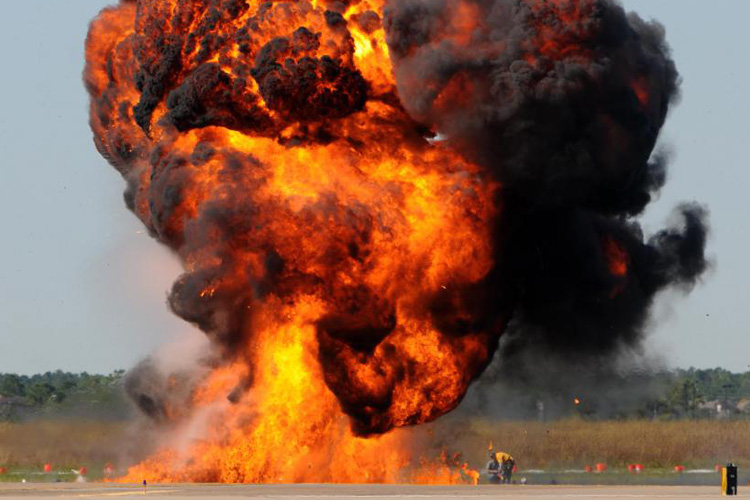There will be a dust explosion if dust is dislodged into the air, mixes with oxygen and there is a source of ignition. Safety measures aim to avoid the presence of the three modules. However, it’s almost impossible to eliminate all three due to heterogeneous nature of dust and eliminating all sources of ignition. Although proper housekeeping should be conducted to avoid flammable concentrations of dust and to eliminate all possible sources of ignition.
Flames and hot surfaces
These are the most common sources of ignition in most facilities. The hot surface or flame may be produced inadvertently, for example, cutting and welding operations near a plant that has combustible dust.
The flame can also be there by design such as drying and heating operations in a facility.
It’s important to note that even the lowest surface temperature can ignite the dust in a facility and is known as minimum ignition temperature. The following safety measures should be observed:
No cutting and welding should be carried out near a facility with flammable dust and steps must be taken to clean the dust.
No dust should be allowed to collect until all sources of ignition are removed from the area.
Indirect methods of heating should be used instead of open flames.
Spontaneous Ignition
If dust is allowed to collect, it poses a risk of spontaneous heating. If the heat continues to rise, the burning temperature of the dust may be reached. This will, in turn, cause a fire, but an explosion may follow if the dust is dispersed in a cloud.
Materials that are prone to spontaneous heating are:
- Cornmeal
- Fertilizers
- Sewage sludge
- Scrap rubber
- Fish meals
- Wood pellets
- Metal Powders
Processing these materials produces heat and the materials should be allowed to cool before being packed or stored. Storage facilities should have ways of measuring the temperature to identify the materials that might spontaneously combust. If there are high levels of temperature, the materials in the storage facility should be re-circulated to dispel the heat.
Metal powders should be stored in sealed containers with an inert atmosphere.
Friction Sparks
Explosions have been caused by foreign objects that end up in a disintegrator or grinding mill with the feedstock. This can be avoided by installing a magnetic separator to grab ferrous tramp metal before they end up in the mill. A metal detector should be used in instances where the feedstock is a paste or made up of coarse material – the metal, once detected can be removed manually.
Pneumatic separators should be used to remove magnetic and non-magnetic bodies.
The machine can also cause ignition, especially from the bearings. It is important to lubricate the bearings to avoid this.
Electrical Plant
Electrical equipment generates sparks that may cause the ignition of flammable dust i.e. when a fuse blows or when the equipment or the cables are damaged. There is also a risk of ignition if the equipment becomes too hot and this usually occurs when dust is allowed to collect on its surface.
Electrical equipment should be kept in areas where they can be easily cleaned to avoid dust collection. Switchgear should be located in a control room that is far from the main workroom. Lighting fittings should also be installed away from the hazardous area and should be separated by dust-tight windows.
If an electronic equipment has to be situated in a hazardous area, it must be certified for use in hazardous locations. This means that its surface should not heat up to the point of igniting any combustible material. Dust should also not be able to collect on the surface to prevent proper cooling.
Explosions have been reported in silos as a result of using portable lead lamps. Areas such as silos and bins should have permanent lighting systems that are suitable for use in that area.
Static Electricity
Safety measures must be carried out to eliminate all static charges in a facility. Conducting material should be earthed by the use of bonding strips. There should also be frequent checks and tests for electrical resistance.
Rubber sleeves and belts should be used in areas where static charges are likely to occur.













